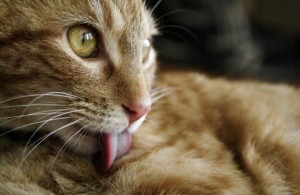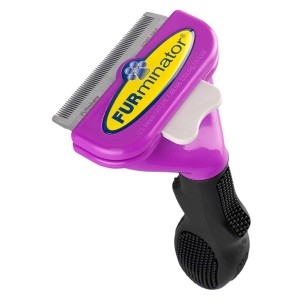Posts Tagged ‘caring for pet’
How To Prevent Hairballs In Your Cat
 There is not many things worse than laying in bed and listening to your cat hacking, gagging and retching at night and then getting up and stepping on a disgusting hairball with your bare feet in the morning. Let alone it being on your newly cleaned carpet.
There is not many things worse than laying in bed and listening to your cat hacking, gagging and retching at night and then getting up and stepping on a disgusting hairball with your bare feet in the morning. Let alone it being on your newly cleaned carpet.
Even though hairballs may be a topic of jokes, they can pose a danger to your cat by potentially blocking the intestines. Sometimes veterinary care may be necessary which can lead to surgical intervention.
The scientific name for a hairball is a trichobezoar. It is the unsavory by-product of a good, clean habit. This damp wad of undigested hair that is moistened by bile and other digestive fluids and tend to be “cigar-shaped” because when we see them, they have been regurgitated through the esophagus which is tube shaped. Some are normal, but as the cat continues to groom itself, the hair fibers are guided down to the stomach by the tongue and form. As they form, this can lead to discomfort, vomiting, anorexia, and diarrhea. The retching can sometimes be confused with asthma, so it is best to have it checked out by your veterinarian.
There are a number of effective ways to avoid and prevent hairballs. Used routinely, they can help hairballs from forming and you won’t need that terrifying trip to the veterinary clinic.
The number one thing is to brush your cat frequently. Not only do they like it, but you remove the loose hair. Brushing is the fastest and easiest way to reduce hair ingestion and it keeps it off your furniture also. One that is really good is called “The Furminator”. They are really durable and are found at all the pet stores.
A lot of owners feed their pets a hairball formulated diet. These formulas contain beet pulp, carbohydrate blends and a fruit or vegetable extract known as FOS that promotes healthy stomach bacteria. This combination of ingredients not only helps to reduce hairballs, but it also enhances your cat’s ability to absorb nutrients, provide bulk to move food through the intestine, promote colon health and reduces waste and litter box odors.
Commercial products like Laxatone or CatLax provide assistance by lubricating action or providing soft bulk or both. These products contain mineral oil and sometimes can deplete the body of vitamin A if taken in large quantities.
Homeopathic remedies such as butter two to three times a week as well as pumpkin or squash have been used with success. The pumpkin and squash also may help with constipation or diarrhea because of the added fiber.
Lastly there are products that are edible emulsifiers that break down the fat in the hairball. Nestle Purina studied hairballs and found that they were composed of a lot of fat in the mix. This product which contains soy lecithin breaks down the existing hairball and allows it to pass more easily through the digestive tract and minimizes the formation of new hairballs. The product that we have in our clinic here is called Capilex and we have had some good results with it.
Hairballs are an unpleasant side effect of your cat’s natural inclination to stay clean and beautiful. Our job as owners is to allow that self-grooming but take responsible steps to make sure it doesn’t result in a dangerous, albeit hairy, health hazard.
As always if you are concerned about your pet’s health, contact our office and we can find the best solution for you and your pet.
